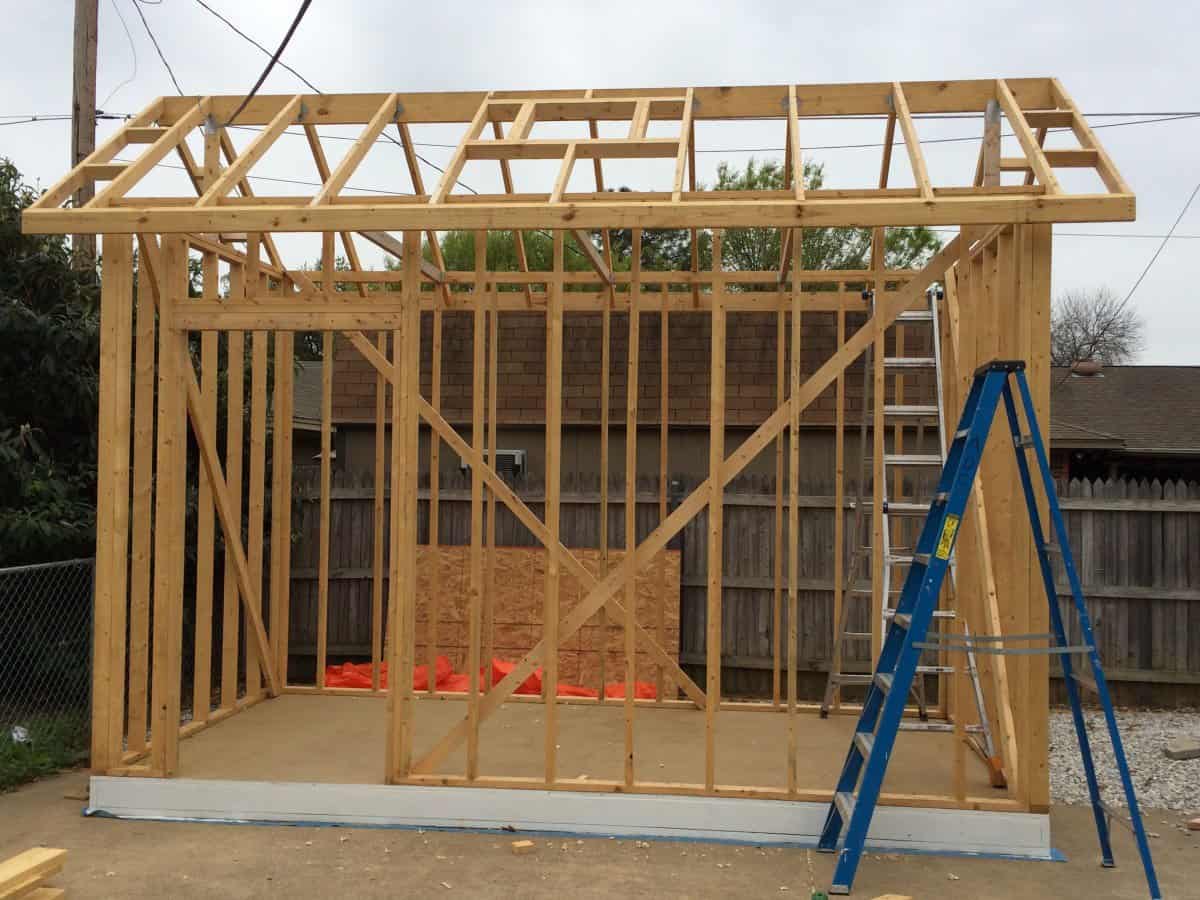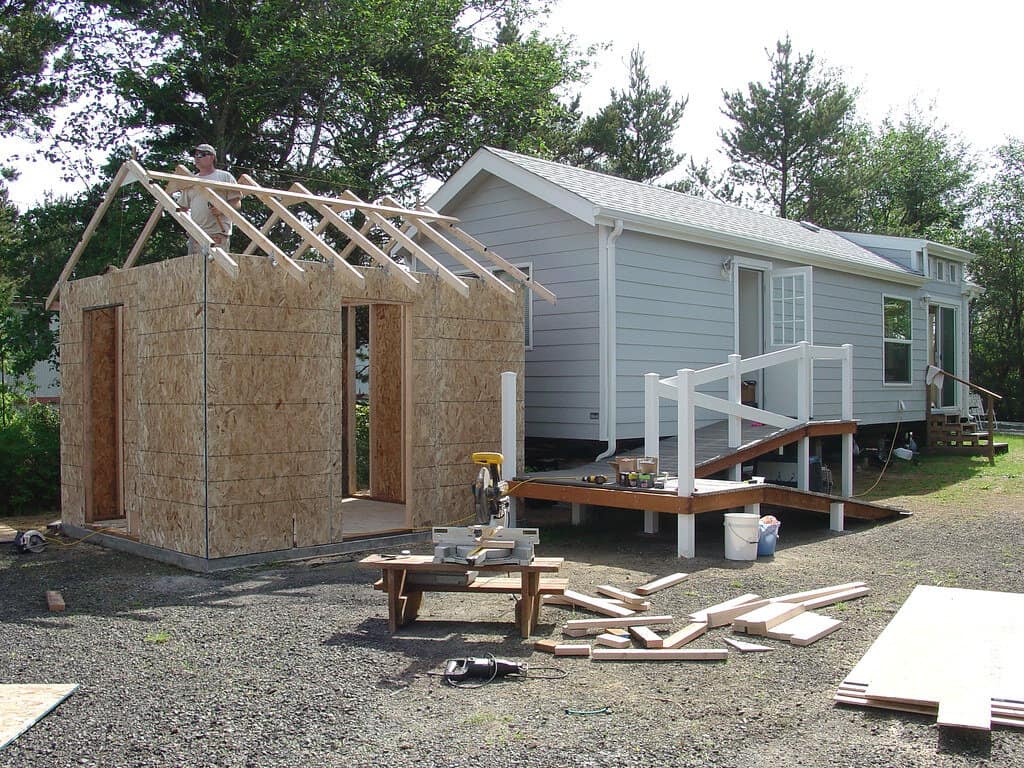Jump to:
Garden rooms are a favourite by many UK homeowners for a reason. These practical spaces simply bring the outdoors in. Building one can be fun and rewarding, especially if you have the skills and time to do so. In this guide, we’ll walk you through planning tips, choosing timber, and building steps. Ready?
Planning and Preparation
For this step, we need you to assess your needs—and these questions can help:
What kind of garden room do you want to build? Will it be a shed-like for storage, a log cabin as a studio, or a summer house style for relaxation? How big can you fit into your outdoor space? Is a small-sized structure enough, or do you need something bigger? The use and size of the structure will be subject to whether or not it requires planning permission.
Read our guide to determine whether your garden room will need planning permission. To be completely certain, be sure to check with your local planning authority for the rules and regulations.
What kind of foundation will the garden room need? Your options can be concrete, wooden base, and gravel. Will you need utilities like electricity or water? If so, how will these be connected? Read these ‘5 Questions to Consider Before Installing Garden Building Electricity’ to learn more.
Your answers will give you a solid starting point for planning and a clear direction. They’ll help you prepare the needed materials and choose design features and layout. Once you’ve got a vision, you can also set a sensible budget and timeline. For more cost information, read our garden room cost guide.
Choose Your Timber

Since you’re building the garden room yourself, getting the materials will also be up to you. Your toolkit is given, so we’ll focus more on which European-sourced timber type to get for robust construction, such as:
Cedar
Cedar is resistant to decay, rot, and insect infestations—qualities that meet the need for garden rooms to withstand harsh elements. It’s easy to see why many garden building manufacturers often reach for this wood type for their models, including wooden gazebos.
You might also like its rich, warm grain patterns, which will make any structure you build look premium—almost like those you find on the market!
Redwood
Redwood shares many qualities with cedar, except it has a richer colour, tends to last longer, and is a bit more expensive. This timber is perfect for outdoor projects, works well with paint and varnish, and has attractive grain patterns to top it off.
Spruce
Spruce timber has the inherent strength to withstand the rigours of outdoor exposure. It’s lightweight yet strong—in fact, it’s one of the strongest and most water-resistant softwoods available. Even better, it’s a budget-friendly option. It is the primary material used at Garden Buildings Direct in the manufacture of our BillyOh buildings, sourced from Scandinavian forests, which are then replanted.
Pressure treated timber
Pressure treatment further enhances timber’s resistance to outdoor challenges. It works for most types of wood, including the best three mentioned above. While cedar and redwood are naturally rot-resistant, pressure treatment doubles that protection.
Regardless of which timber you choose, you’ll want the timber parts for the base or lower sections of the garden room to be pressure-treated to keep dampness at bay.
Overall, pressure-treated wood becomes more resistant to rain, snow, and UV rays, which can otherwise lead to weathering, cracking, warping, and other issues.
Tips: If you’re sourcing wood for your project, consider investing in pressure-treated timber. While it may cost more upfront, it will last longer and save you the hassle of annual maintenance. And remember, wood in its natural form can be vulnerable when left bare and untreated over time. Hence why pressure treated sheds and pressure treated log cabins are so widely available on the market.
Read our guide, ‘Pressure Treated vs Dip Treated Wooden Buildings,’ to learn more.
General Building Process

The building process can vary, but here’s a general guideline you can use as a base—feel free to add more as necessary:
- We’ll leave the choice of location for your DIY garden room up to you. Even if the surface is level, we recommend starting with the foundation and laying a stable base for better stability and support. You can follow this guide, ‘How to Build a Shed Base,’ for detailed steps.
- Once the base is ready, you can move on to building the frame with your chosen wood, then add the walls and roof. Be sure to take accurate measurements when cutting, especially if you’re adding multiple windows and doors.
- Nails will be the fastest and most rigid way to hold your wooden building together. However, consider using screws when fitting panels or boards to the framing. They might need to be allowed to move after the building is finished, as wood will naturally try to settle. Being able to remove the screws will help enormously here. Also, drill holes before inserting screws, to prevent the wood from splitting.
- Weatherproof the structure by applying sealants and insulation to close gaps and prevent drafts. This should be done after your garden room is built and nearly complete. Roofing felt is also worth considering to make the roof weather-resistant. The same goes for air gap insulation, and you may want to hire a professional to ensure it’s done properly.
- Add the final touches, such as paint, to complete the look of your garden room. For pressure-treated wood, wait about 3 to 4 months for the timber to dry or cure fully. It may take up to 6 months for the moisture levels to drop during winter. Find all the details you need in this guide: Can I Paint Pressure Treated Wood?
Well done on getting through this guide! With a little time and effort, you’ll have the perfect space to work, relax, or get creative.
Now, it’s time to decorate the interior next, don’t you think? Coming up next on your reading list: Summer House Interior Ideas You Don’t Wanna Miss!





